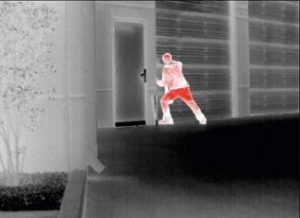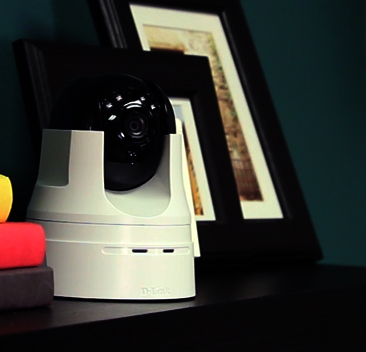
For mission-critical applications where 24/7 monitoring is a necessity, only certain video technologies can get the job done. Installing a traditional visible light camera without image enhancing features will, of course, yield dark images that make forensic review and video analytics performance, difficult, if not impossible.
On the other hand, deploying thermal security cameras that use heat signatures instead of light to produce video creates a different result. Thermal can make all the difference for your customers for threat detection, real-time response, crime prevention, and here’s why.
Every plant, animal, human, car and object emits heat. The defining characteristic of a thermal sensor is the detection of heat, reflecting the minute differences among heat signatures in images. Typically, thermal security cameras display objects in shades of grey, black and white based on how much or little energy the object gives off.
As a result, thermal cameras can deliver clear images regardless of rain, shine or complete darkness. For this reason, thermal images, characterized for their high-contrast, are ideal for video analytics and often result in more accurate detection.
Thermal cameras are attractive options for integrators for industrial applications. While alternative perimeter solutions like motion detectors or buried cable systems require additional devices to verify alerts, thermal cameras can both detect and provide visuals of approaching targets for assessment. Easy to mount on existing structures or lattices, thermal cameras simplify installation. They also reduce infrastructure by eliminating the need for exterior lights for video.
Thermal Security Applications
Thermal cameras’ 24-hour monitoring capabilities and deployment advantages are some of the key factors that have led to the broader adoption of these solutions. Several decades ago, thermal was a commercially developed, military-qualified technology.
Today, thermal has become the preferred monitoring solution for nuclear power plants, electrical substations, oil and gas refineries and airports. Moreover, having seen the continued reliability and success of thermal technology in the critical infrastructure sector, commercial customers with outdoor assets are increasingly looking to deploy the technology.
Marinas, construction sites, remote storage facilities and car dealerships are just a few examples of applications leveraging thermal to reduce false alarms, provide wide area protection and enhance perimeter defense. From a marketplace standpoint, there are also now multiple suppliers in the security sector introducing thermal solutions — a sign of the health, growth and expansion of the thermal market.
With more thermal security solutions available than ever before, it is essential for integrators to remember that not all thermal cameras are created equal. It’s important to know what kind of thermal camera is best suited for your application to meet your client’s needs. Here are three of the top considerations for thermal cameras to help you navigate the options and distinguish first-class solutions that will yield high-performance.
1) Resolution and Detection Ranges
For critical infrastructure deployments where human detection beyond the fence line is a must, cameras with full thermal resolution of 640×480 are optimal. They can give you up to 16x as many pixels as the standard thermal camera, yielding much longer detection ranges and greater image detail. On the other hand, for commercial installations where wide-area monitoring is the priority and the needed detection range is within 50 meters, 320×120 resolution is sufficient.
2) Built-in Analytics
Thermal cameras that can not only send alerts, but also classify alerts offer an enhanced value for customers. In this era of artificial intelligence (AI) and deep learning, superior thermal cameras are those that provide reliable human and vehicle detection. Backed with image enhancing features, these thermal cameras create sharper, crisp edges that are optimized for classification analytics. These technologies help to ensure accurate, actionable alerts that reduce false positives and lower the overall cost of ownership of the solution.
3) Interoperability
A key part of security system design is ensuring the edge devices are compatible with the head end, or video management system. To ensure interoperability and immediate adoption by third-party providers, integrators should look for thermal cameras that are ONVIF-compliant and that stream digital video in H.264.
Be ready to make the case to your customers about how thermal can make a tangible difference for perimeter and outdoor area protection











